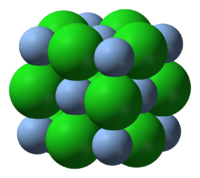
Photo from wikipedia
Abstract An electrical measurement is non-linear when it is affected by the applied stimulus, i.e. when the measured phenomenon changes with amplitude. If pinched hysteresis loops can be observed in… Click to show full abstract
Abstract An electrical measurement is non-linear when it is affected by the applied stimulus, i.e. when the measured phenomenon changes with amplitude. If pinched hysteresis loops can be observed in the voltage current representation, the underlying tissue can be classified as a memristor. Several biological memristors have been published, like human skin and apples. However, changes in the polarization impedance of electrodes may also cause pinched hysteresis loops. The question whether the reported biological memristors are real or whether the results just reflect changes in the polarization impedance arises. If the impedance of the measured object is close to or smaller than the polarization impedance of the used electrodes, the latter may dominate the measurement. In this study, we investigated the non-linear electrical properties of silver/silver chloride electrodes in a sodium chloride solution that has a similar concentration as human sweat and compared these to results from human skin. First of all, we found that silver/silver chloride electrodes in sodium chloride solution can be classified as memristors. However, the currents obtained from the sodium chloride solution are much higher than the currents recorded from human skin and there is a qualitative difference in the pinched hysteresis loops in both cases. We can conclude that the non-linear electrical measurements with silver/silver chloride on human skin are actually dominated by the skin and we can confirm that the human skin memristor really exists.
Journal Title: Journal of Electrical Bioimpedance
Year Published: 2019
Link to full text (if available)
Share on Social Media: Sign Up to like & get
recommendations!